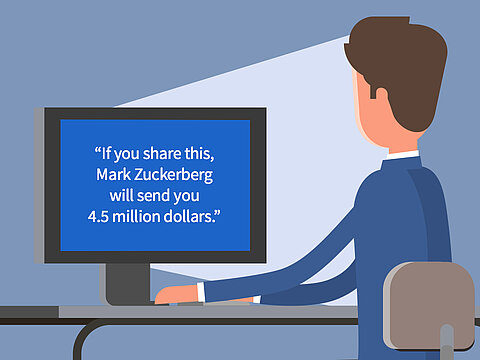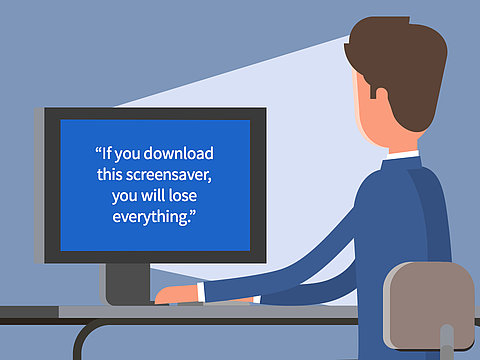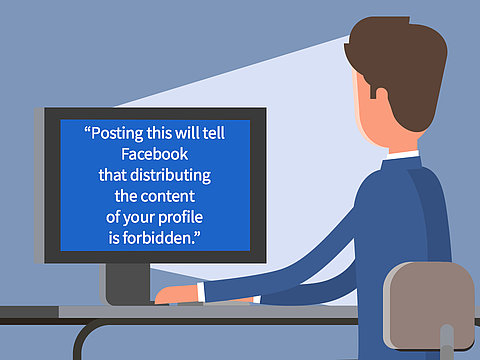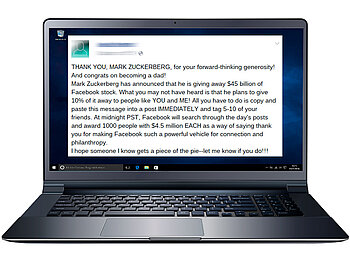Perhaps you have already received a message like this: “A virus will set your hard disk on fire.” “Mark Zuckerberg is giving away his money.” “You will only be able to use your messaging service for free in future if you forward this message.” These are all hoaxes – digital chain letters, usually with sensationalist contents that are just bogus messages. You can find out here how dangerous hoaxes are and what you can do about them.
… have already seen a hoax on the internet.
… have never seen any hoaxes on the internet.
… think that new laws are required so Facebook and others have to act quicker to delete hoaxes.
Source: forsa. Online survey
How do I recognise a hoax?
Hoaxes can involve a wide range of subjects – warnings about computer viruses or supposed health risks, horror stories, conspiracy theories, calls for donations for the seriously ill and many more. All of these stories are designed to be spectacular but are not based on facts – they are simply being used as bait.
In some cases, you cannot recognise hoaxes directly, so a quick search on the Internet is helpful. In other cases, you can easily see through fake messages. They often describe something that is simply not possible in this way.
Hoaxes can be shocking – and spread like a digital wildfire. Shocked and shared: hoaxes spread at lightning speed through social media.
The following signs should set alarm bells ringing:

Three examples of hoaxes
How dangerous is a hoax and how can I protect myself?
The hoax message itself is harmless. You should simply ignore words of advice and recommendations on what to do. For example, in some warnings about digital malware, the recipients are requested to delete certain system files from their computer. This will supposedly protect them from the effects. Doing so, however can have the opposite effect – by deleting important files they are possibly creating security holes in their system or make it unusable.

There may also be an attempt behind the hoax messages to get hold of credit card data, user names and passwords. Therefore, personal data back should never be handed out in an answer. Links in the message should never be clicked, as a phishing website may be hidden behind them. Files in email attachments may contain malware and should not be opened. Keep your antivirus software permanently up to date so that malware can be immediately detected in the event of an attack.
Rumours are another type of hoax and dangerous in another way. They are often used to slander companies or individuals and contain defamatory information with little or no factual basis.
Hoaxes spread rapidly on Facebook. Many Facebook users are good multiplicators for those.
What are the senders hoping to achieve?
In many cases the senders of hoaxes are playing a prank and exploit the recipients’ gullibility in doing so.
The people who forward these messages are assuming that they are doing their fellow users a favour. But by warning friends and relatives about supposed risks and dangers, they only unnerve or annoy them.
Do not let the messages get to you. The senders of hoaxes are deliberately spreading false information.
What to do about hoaxes on the Internet?
Check each email message and post on social networks before clicking on “Forward”, “Like” or “Share”. Is the message it contains actually true? Tell those who have sent you such a message about the fake content. This will stop rumours and fake messages spreading on the Internet.




